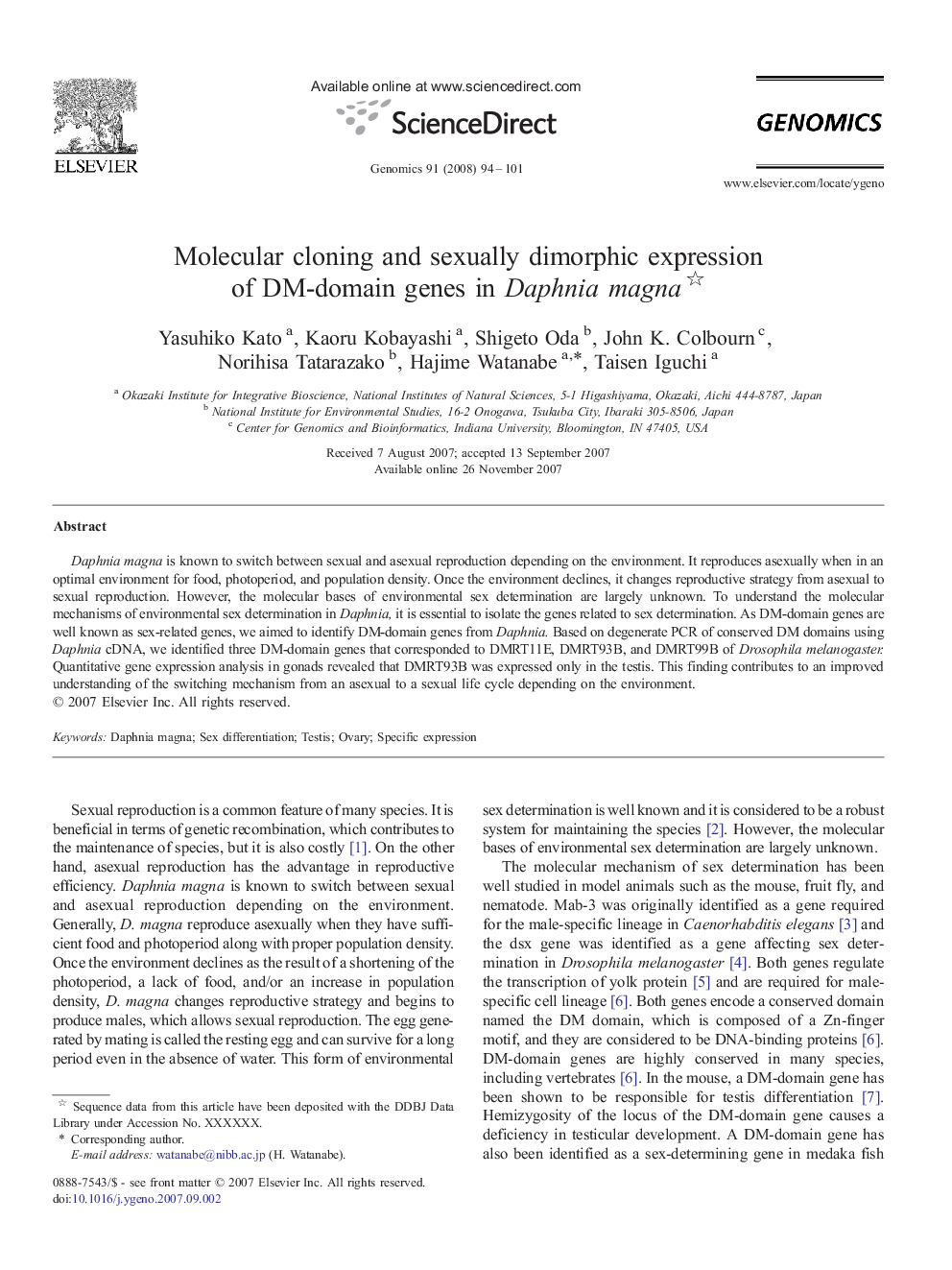| Article ID | Journal | Published Year | Pages | File Type |
|---|---|---|---|---|
| 2821044 | Genomics | 2008 | 8 Pages |
Daphnia magna is known to switch between sexual and asexual reproduction depending on the environment. It reproduces asexually when in an optimal environment for food, photoperiod, and population density. Once the environment declines, it changes reproductive strategy from asexual to sexual reproduction. However, the molecular bases of environmental sex determination are largely unknown. To understand the molecular mechanisms of environmental sex determination in Daphnia, it is essential to isolate the genes related to sex determination. As DM-domain genes are well known as sex-related genes, we aimed to identify DM-domain genes from Daphnia. Based on degenerate PCR of conserved DM domains using Daphnia cDNA, we identified three DM-domain genes that corresponded to DMRT11E, DMRT93B, and DMRT99B of Drosophila melanogaster. Quantitative gene expression analysis in gonads revealed that DMRT93B was expressed only in the testis. This finding contributes to an improved understanding of the switching mechanism from an asexual to a sexual life cycle depending on the environment.
